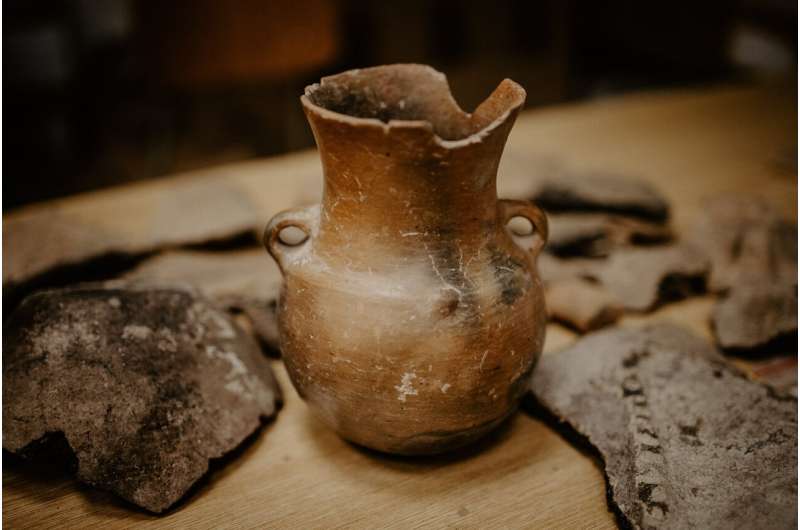This article has been reviewed according to Science X's editorial process and policies. Editors have highlighted the following attributes while ensuring the content's credibility:
fact-checked
trusted source
proofread
People of color largely underrepresented among authors published in the American Journal of Archaeology

A new demographic survey of authorship in the American Journal of Archaeology (AJA) reveals that people of color have been largely underrepresented among the scholars published in the journal.
The results of the survey, which also found that authors who are the children of people without advanced degrees were also underrepresented in the journal's pages, are published in the paper "Demographic Dynamics of Publishing in the American Journal of Archaeology." The study was conducted independently of the AJA, which publishes original research on Mediterranean archaeology, and is included in the journal's April 2023 issue.
"This important study by Laura Heath-Stout, Grace Erny, and Dimitri Nakassis quantifies and makes explicit something that many of us in the field tacitly assumed: that people of color and first-generation scholars are underrepresented in the American Journal of Archaeology's authorship," Emma Blake and Robert Schon, the Editors-in-Chief of the AJA, say of the findings.
Heath-Stout, Erny, and Nakassis echo that their analysis suggests that both people of color and first-generation students face barriers to entering the field of Mediterranean archaeology and publishing in prestigious journals. "These results are probably unsurprising to most people familiar with the field," the authors write. "They certainly reflect major structural inequalities both within the United States and globally," including the costs associated with pursuing higher education and Mediterranean archaeology specifically.
The researchers created an eight-question email survey to collect demographic data from authors published in the AJA, including information on their race, gender, and parents' education level. They received responses from 274 authors who published research in the journal between 2000 and 2020. Though the journal does publish work from international contributors, the journal is U.S.-based and most of the scholars surveyed were from the U.S., so the authors compared the responses against demographics of the U.S.
Among the survey respondents, gender was divided almost evenly, while 92% identified their race as white only. In comparison, the 2020 census found that 61.6% of people in the entire U.S. were white alone.
"Clearly, people of color are greatly underrepresented among AJA authors when compared to the U.S. population as a whole," Heath-Stout, Erny, and Nakassis write. The survey also revealed that a majority (74.2%) of authors who have published three or more times in the journal are male, despite the gender parity in the respondent group as a whole.
Blake and Schon note that the journal has embarked on initiatives designed to address these issues. "One of our main goals as Editors-in-Chief of the AJA has been to increase diversity, equity, and inclusion (DEI) in the journal both in its content as well as among the authors who share their scholarship in our pages," they say.
"To this end, we expanded the temporal purview of the journal with the hopes of eliciting contributions from a wider range of scholars. Secondly, we created a mentorship program to help first time authors from underrepresented groups negotiate the steps of publishing in the AJA."
In the paper, the authors suggest that making Mediterranean archaeology more accessible and inclusive will not only make the field more hospitable and welcoming to all but will also build a discipline that more effectively studies the diverse societies of the ancient world. Blake and Schon echo this sentiment. "We hope that the stark patterns revealed in this article will stimulate our colleagues more broadly to work towards greater inclusivity, thus promoting a more robust field of Mediterranean archaeology in the future," they say.
More information: Laura E. Heath-Stout et al, Demographic Dynamics of Publishing in the American Journal of Archaeology, American Journal of Archaeology (2023). DOI: 10.1086/723220
Provided by University of Chicago



















